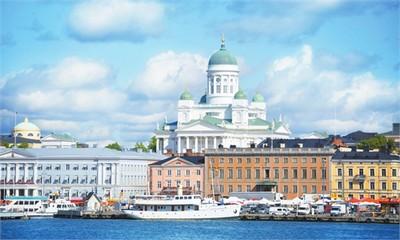
Brazilian ore, Chinese ingenuity craft green future for global trade
Ding Gang
It began with a single ship laden with iron ore, traversing 11,000 miles from Brazil’s sun-drenched coast to China’s bustling Tianjin Port.
That Saturday in July 1973 marked more than just another delivery – it was the opening chapter of one of global trade’s most remarkable partnerships, shaping the world we live in today.
The development of China’s steel industry has laid a solid foundation for its transformation into the world’s factory, and Brazilian iron ore has become the “power fuel.”

I can still remember the interview I had about 10 years ago.
“We were there even before our countries established diplomatic relations,” says José Carlos Martins, Vale’s former executive vice president of Iron Ore and Strategy. I still remembered that his eyes was twinkling with pride during our conversation: “Over four decades, we’ve shipped 1.1 billion tons of iron ore to China – enough to build 96,000 Eiffel Towers or 17,000 Bird’s Nest stadiums.” Although the two countries are far apart, Vale is connecting them: “We transport a part of Brazil to China and use a part of Brazil to build China.” This “blood and flesh connection” is mutually beneficial, creating huge profits not only for Vale and Brazil but also contributing to the development of China.
Today, Vale’s partnership with China has lasted for more than half a century. China has been the company’s largest market since 2006 and destination of more than 50 percent of its iron ore products since 2014. In 2023, when the company celebrated 50 years of its partnership with China, its accumulative iron ore export to China broke the three billion tons mark.
This isn’t just another trade story. It’s a tale of how the two nations, separated by vast oceans, have found their economic destinies intertwined through rust-colored rocks.
Brazil remains one of China’s primary iron ore suppliers, feeding the dragon’s insatiable appetite for steel.
Numbers tell the story: In the first quarter of 2024 alone, China imported 310 million tons of iron ore, with Brazil accounting for 69 million tons – a whopping 19 percent year-on-year increase.
However, a most fascinating chapter in this decades-long partnership is currently being written as both nations grapple with climate change. Enter the Sohar Max – a vessel that looks like it sailed straight out of a Jules Verne novel.
This is a testament to the power of human ingenuity and the potential for positive change in global trade.
This big ship was not installed in some high-tech European shipyard but in Zhoushan, East China’s Zhejiang Province, where ancient maritime traditions meet cutting-edge innovations.
These rotor sails aren’t just for show – they’re engineering marvels that can boost the ship’s efficiency by up to 6 percent and slash 3,000 tons of carbon emissions per vessel. This is a significant step toward a more sustainable future for global trade.
The transformation of the Sohar Max represents more than just technological advancement. It also shows the China-Brazil iron ore trade has evolved from simple commerce to a laboratory for maritime innovation.
“International shipping is one of mining’s biggest carbon culprits,” says Tracy Xie, Vale’s president for China. “We’re thrilled to partner with China in greening our shipping routes. It’s about leaving a lighter footprint on the seas we’ve traversed for half a century.”
On October 29, the 400,000-ton bulk carrier Sohar Max successfully completed the installation of five foldable shipborne rotor sails at Zhoushan COSCO Shipping Heavy Industry.
It is sailing toward the future of green shipping, navigating through the vast and boundless sea of stars.
It has reminded us that some of the most enduring partnerships are forged in the unlikeliest places – even in the holds of iron ore carriers crossing vast oceans.
From that first shipment in 1973 to today’s wind-powered giants, this relationship continues to evolve, one innovation at a time.
The next chapter? It’s already being written on the high seas, where Brazilian ore and Chinese ingenuity are crafting a greener future for global trade.
If the past 50 years are any indication, we’re in for quite a voyage.
The writer is a senior editor with People’s Daily, and currently a senior fellow with the Chongyang Institute for Financial Studies at Renmin University of China
